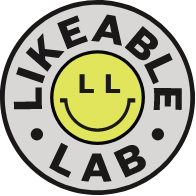The Dolly Parton Challenge captured the imagination of celebrities, brands and household pets when it went viral last month.
Cleveland Police even tapped into the concept in an attempt to track down a wanted man.
If you missed the social media phenomenon, it involved a meme, showing Dolly in four different guises – for LinkedIn (suited and booted), Facebook (Christmas sweater), Instagram (boho-chic) and Tinder (playboy Bunny).
So, why did it strike such a chord? Because it’s something we can all relate to.
As humans, we tend to present ourselves differently in different situations. For instance, you would wear something totally different to a nightclub than you would to have tea with your nana. (Although we doubt Doug the Pug would differentiate.)
We also use different language in different situations. Back to tea with Nana… ever stopped to marvel about how you automatically become less sweary when you’re in the presence of your elders?
Not only was it amusing – and refreshing – to see celebrities poking fun at themselves in the #dollypartonchallenge, it was a good reminder that social media platforms are different and should be treated differently.
Yes, you should always stay true to your brand but, like people, a brand has different aspects to its ‘personality’. And, on social media, these have different expressions depending on the platform.
Dolly Parton’s ‘9 to 5’ suit says it all. LinkedIn is predominantly a social platform for professionals, so the tone should be reasonably formal. But not stuffy. Remember to keep the ‘social’ in social media. Be warm, but not overly familiar.
LinkedIn is all about starting and joining conversations. If you want to present yourself, or your brand, as a thought leader then your posts and comments should be thoughtful and insightful, but also readable.
And, if you want to be taken seriously, leave emojis and memes at the door.
Twitter is all about speed and wit – being in the moment and owning it. By wit, we mean the dictionary definition, not the ‘funny, ha ha’ kind. Showcase inventive thought, quick understanding and keen intelligence.
You want to cut through the noise, while adding something valuable to the conversation (unless of course you are starting the conversation).
Be succinct and clear. 280 characters is all you get but 100 is better (research shows that tweets with 100 characters get better engagement). Take some Shakespeareian advice – ‘Brevity is the soul of wit’.
On the social media spectrum, Facebook sits somewhere between LinkedIn and Twitter.
It’s more informal than LinkedIn, but bear in mind, while it has a fairly even spread across age groups, it is the most popular social network among seniors. So, try and use language that spans generations.
Having said that, use language that is playful, engaging, personable, friendly and, where appropriate, humorous. Avoid jargon. Be human.
Nostalgia can be very effective Facebook – whether the 1960s or the 1990s, shared memories are a great way of connecting with people. Sentence starters like ‘everyone loves’ or ‘remember when’ make a post personal and relatable.
Instagram is primarily a visual platform. Think of your copy as a caption to the image. But not an afterthought. You still need to put thought into what you say, so it connects with the image and adds value.
Be lighthearted, inviting and positive. As a rough guide, use a classic marketing tone but don’t be too cheesy. Bear in mind the age of your audience – two thirds of Instagram users are aged 34 and under, so speak their language. But don’t force it. Be authentic.
If you want people to take an action, be clear – tell them to swipe, tag, click the link in the bio… you want to stop people scrolling so it’s ok to be a little forward. And don’t forget to use #hashtags.
Oh, and if you’re thinking of doing the Dolly Parton Challenge, do it here. Afterall, ‘the gram’ is where it all started.
Struggling to find your social media voices? Get in touch.

